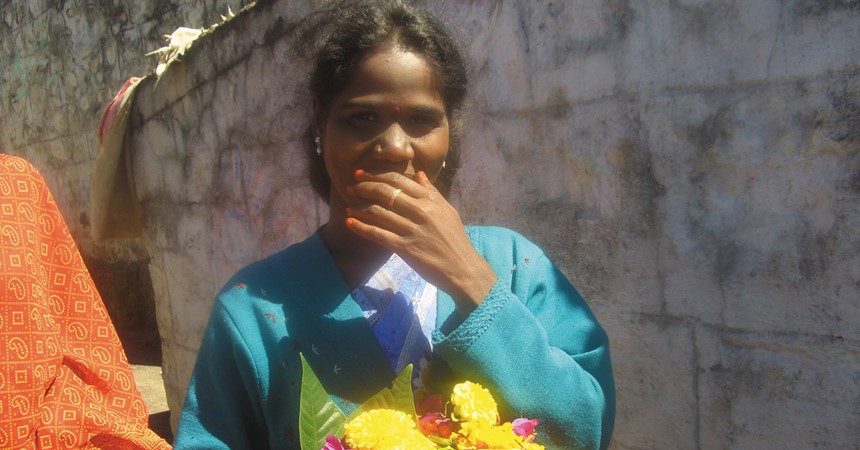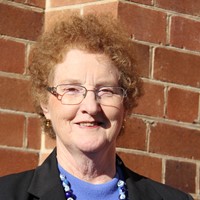After my marriage, I lived and worked in South India for over three years. Since then, I have visited regularly. On one occasion, I met a young woman called Jodi in the mountains of Southern India, where the eastern state of Tamil Nadu rises high up into the Western Ghats near the border with the western state of Kerala.
Jodi was studying in Grihini, a school designed specifically for poor women in the remote villages around the hill station of Kodaikanal in South India. At 19, one of eight children, none of whom attended school, Jodi was learning to read and write. Over the next few weeks, I visited a number of villages and met with around 70 women like Jodi, who were either current students or who had completed the Grihini program.
The Grihini experience has been lovingly nurtured by a group of Indian and expatriate educators since 1987. It is hosted by the local Jesuit community in Kodaikanal and supported by donors in Australia and elsewhere. After their mothers had been persuaded that it was safe to let their daughters leave their village to take part in the six-month Grihini residential program, about 30 women, aged between 13 and 23, were selected for the pioneer cohort. Some were Adivasi (or Tribals); some were from Dalit colonies (or “untouchables”, those whom Gandhi called “Harijan”); some came from colonies of Tamils repatriated from Sri Lanka; some were from “caste” colonies. All were poor with limited or no education.
As with all education programs, the proof of Grihini’s effectiveness is in its graduates. Teachers are called Akka or “big sister” and young women are invited to take on new roles as women in charge of their own lives. The teachers do not educate the girls out of their villages, but equip them to return to their homes and to practise what they have learned about hygiene, nutrition, the environment, superstition, caste oppression and empowerment. Women who had been through the program enthusiastically ensure their own children receive a good education.
Maheshwari, 29, employed by the Government as a nurse’s aide, completed Year 10 by correspondence. Completion of her nursing required that she attend university once a week, a three-hour journey each way by bus, which she undertook with her brother. “If I had not gone to Grihini, I would not have taken this opportunity [to complete 10th Standard and her nursing training],” she told me.
When I caught my first sight of the village of Poombari from high above on the winding narrow road, it looked bucolically picturesque, terracotta tiled roofs contrasting with the narrow terraces in a spectrum of greens which edged down the mountain towards the village. Close up, however, Poombari was built on the ingrained oppression of poverty and caste. Our car took me to the Dalit colony, a segregated settlement within the larger village reserved for those who were “out-of-caste”. The homes here were small and dark, with no water. Women had to bend to enter. The women told me that before they went to Grihini and learned their rights, their children were treated differently in the local government child care centre and made to sit in a different place from the “caste” children. They showed me a monument to their new-found power: a toilet block, large and imposing, with carved wooden doors, in a central place in the colony. Before the women had pressured the government to build them this facility, they had had no private place in which to bathe or toilet.
Nallamma was 14 when I met her in Poombari. She was one of four children and had dropped out of school after Year 7. Around this time, her uncle had died, leaving four children. With the strong sense of family responsibility one often sees in India, Nallamma’s parents had assumed responsibility for these children as well, bringing the household to eight children and three adults. Around this time, textile mills in the area began aggressive recruitment for young labour. At festival times, the recruiters would visit places like Poombari, bringing alcohol for the men. If a villager agreed for his daughter to be taken to the textile mills to work, he was often given a cash handout. So Nallamma had become a worker in the textile mills, even though the legal age for such work is 18. She needed to stand for long hours, the work was dirty and the supervisors sometimes abused the young women. Nallamma wanted to return to school.
Of course, Nallamma could have done what most of the other women in the Dalit colony in Poombari did: work for daily wages as an agricultural coolie. The soaring sides of Poombari are sculpted with tiers of commercial gardens. Garlic, carrots, cabbages and peas grow in these narrow ledges up and around the mountains. The work of planting, weeding and harvesting is the work of the poor, especially women. It is not well paid and it is seasonal, paying possibly around 2000 rupees during the months when there is work. Before beginning her seven-hour shift, a worker might walk up for to two hours to reach the field. (By way of understanding salary relativities, young graduates who live in cities can earn up to 50,000 plus rupees a month.)
In Mooliyar village, the girls and young women met me with bunches of marigolds and trays of papaya and bananas. We climbed up a steep pathway through the village. A single pipe carried water to the village from the river across the highway. Finally, at the top, we reached a meeting room. The forest continued to climb beyond this point further up the range. The room was filled with women sitting cross-legged on the floor or standing around the entrance. Toddlers climbed from knee to knee. One of the speakers was Leelavathi who had only a few years’ schooling when she joined Grihini in its early days. Building on what she had gained from the program, she successfully nominated as a local government councillor and spent five years in this role. She set up her own organisation to protect the rights of (women) workers. As I was leaving the village, the white-haired village president pointed out the solid single-room houses of rendered brick and tiled roofs. “The women got us these good houses from the government,” he said. “The women did it.”
As I said goodbye to Grihini, Jodi gave me a scarf of double thickness that she had knitted on circular needles. Only afterwards did I notice her hands, twisted like the shattered foot of a seagull. It is with these broken hands that she produces her beautiful handwork.
This is the kind of story that inspired Anne’s recently published memoir, Saffron and Silk. To find out more about Saffron and Silk, please visit Anne's blog. Learn more about or support Grihini. This story has been rewritten from one published as “Kurinji”, Stories for International Women’s Day, ACU website, 2011.























































































